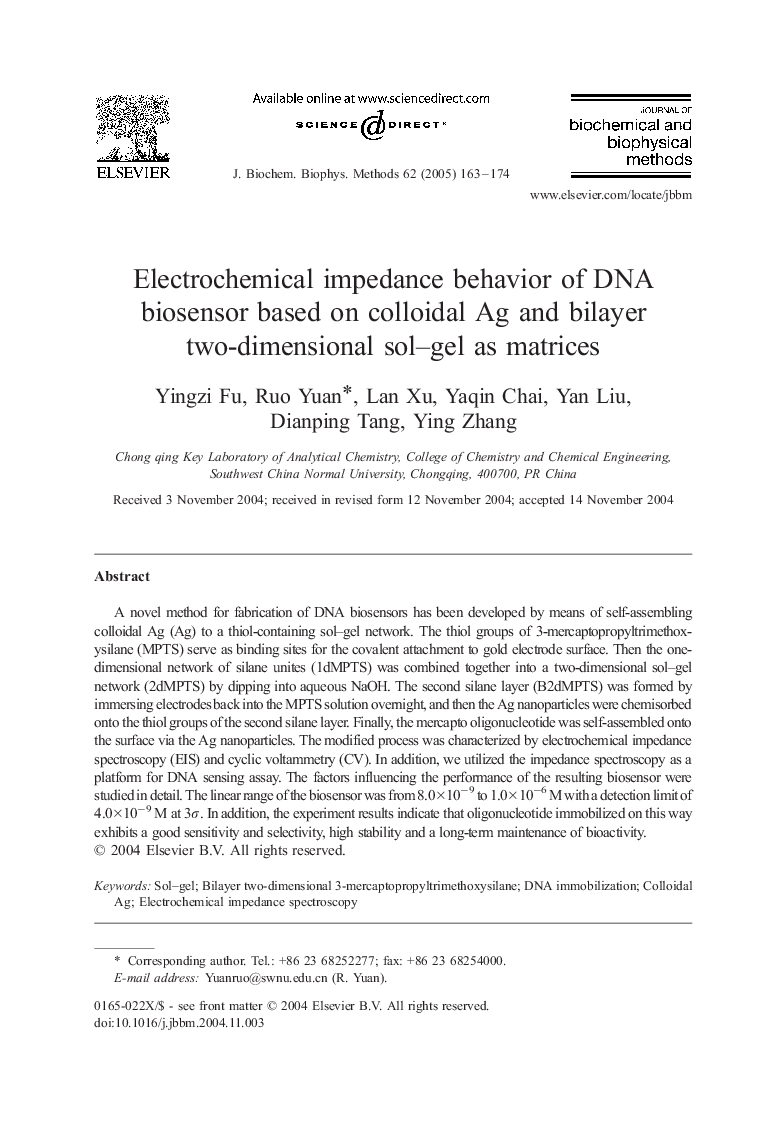| Article ID | Journal | Published Year | Pages | File Type |
|---|---|---|---|---|
| 10825161 | Journal of Biochemical and Biophysical Methods | 2005 | 12 Pages |
Abstract
A novel method for fabrication of DNA biosensors has been developed by means of self-assembling colloidal Ag (Ag) to a thiol-containing sol-gel network. The thiol groups of 3-mercaptopropyltrimethoxysilane (MPTS) serve as binding sites for the covalent attachment to gold electrode surface. Then the one-dimensional network of silane unites (1dMPTS) was combined together into a two-dimensional sol-gel network (2dMPTS) by dipping into aqueous NaOH. The second silane layer (B2dMPTS) was formed by immersing electrodes back into the MPTS solution overnight, and then the Ag nanoparticles were chemisorbed onto the thiol groups of the second silane layer. Finally, the mercapto oligonucleotide was self-assembled onto the surface via the Ag nanoparticles. The modified process was characterized by electrochemical impedance spectroscopy (EIS) and cyclic voltammetry (CV). In addition, we utilized the impedance spectroscopy as a platform for DNA sensing assay. The factors influencing the performance of the resulting biosensor were studied in detail. The linear range of the biosensor was from 8.0Ã10â9 to 1.0Ã10â6 M with a detection limit of 4.0Ã10â9 M at 3Ï. In addition, the experiment results indicate that oligonucleotide immobilized on this way exhibits a good sensitivity and selectivity, high stability and a long-term maintenance of bioactivity.
Related Topics
Life Sciences
Biochemistry, Genetics and Molecular Biology
Biochemistry
Authors
Yingzi Fu, Ruo Yuan, Lan Xu, Yaqin Chai, Yan Liu, Dianping Tang, Ying Zhang,
